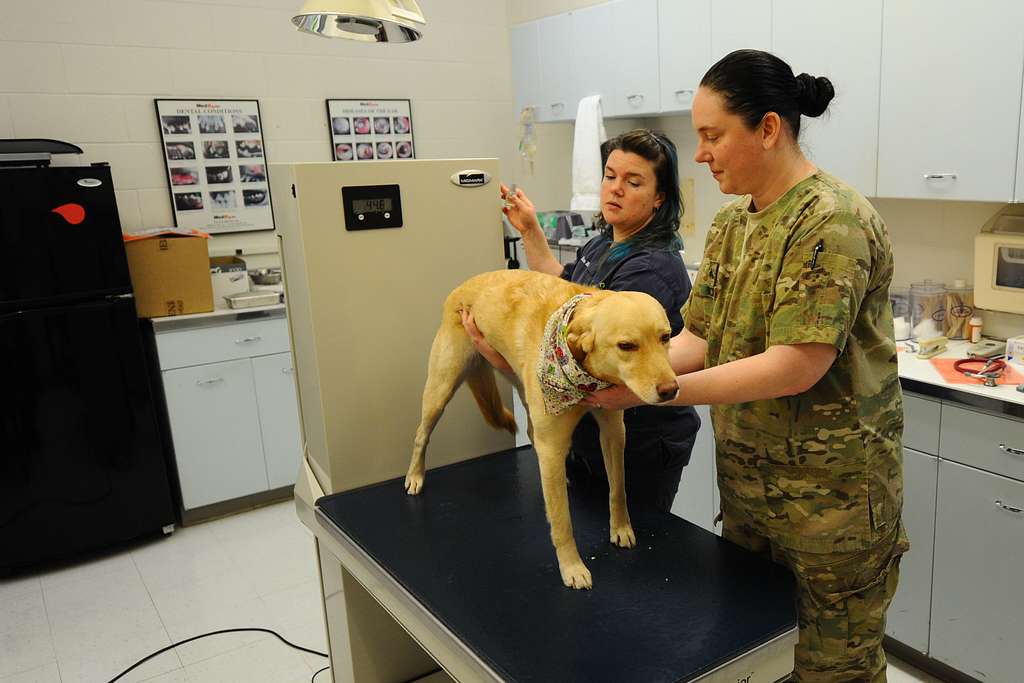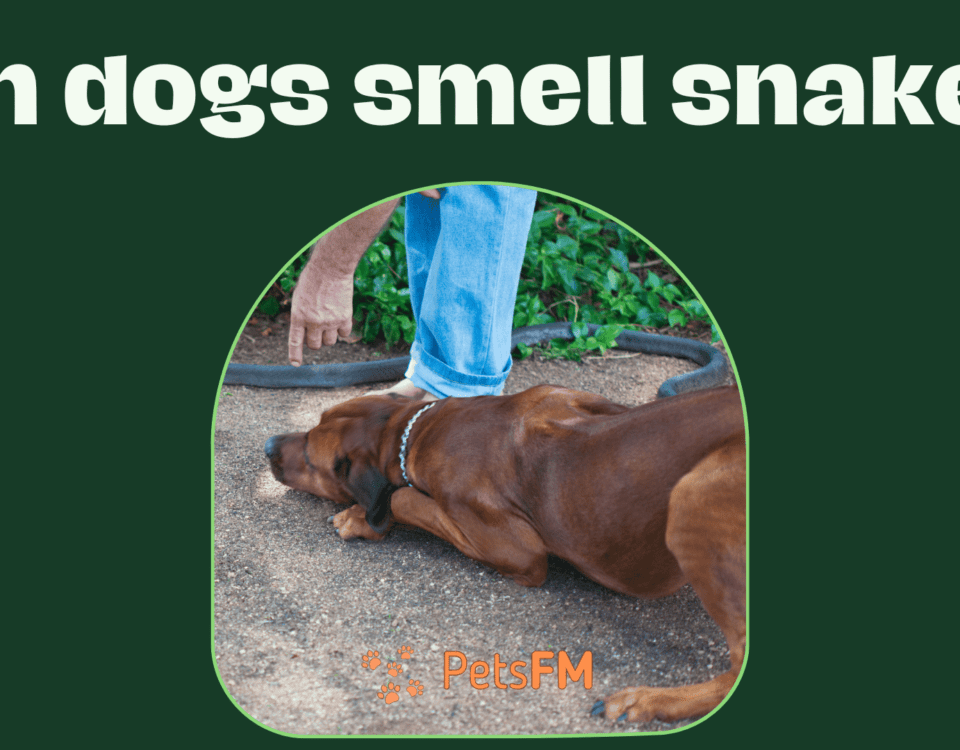


Do’s and Don’ts of Scruffing Your Dog: A Comprehensive Guide
December 31, 2023


Learn If Birds Can Smell Food Put in the Feeder [2024 Guide]
December 31, 2023Let’s explore a topic that all dog owners can relate to: the peculiar behaviors exhibited by our furry friends. One common behavior is when dogs position their heads differently, such as tilting, raising, or lowering.
A particularly intriguing action is when a dog hangs its head low. This behavior doesn’t have a singular explanation, but it’s fascinating to explore. But first, let’s address the question: “Why do dogs hang their heads low?”
Frequently, dogs lower their heads as a sign of submission, nervousness, or feelings of guilt. This behavior can also stem from physical ailments like soft tissue injuries or health issues. These health problems may include degenerative disc diseases, atlantoaxial luxation, meningitis, gastrointestinal discomfort, osteoarthritis, cancer, or cognitive dysfunction in older dogs.
Let us learn more about this dog behavior in our article below.
Why Is My Dog Hanging Its Head Low?
There are several reasons why you might notice your dog hanging its head low.
1: Fear Or Anxiety
Anxiety often plays a role in why dogs hang their heads low. This anxiety can stem from various sources, such as separation anxiety, fear, aging, or adjusting to new surroundings. It’s crucial to address anxiety in dogs proactively.
Headhanging might seem like a minor issue initially, but treating your dog early is essential. Without intervention, more severe behaviors like self-injury, destruction of furniture, or excessive jumping may develop.


Although it’s not definitively established whether dogs experience guilt or understand their misdeeds, they often lower their heads and arch their backs when reprimanded or experiencing fear or stress.
2: Submissive Behavior
When a dog with a submissive nature lowers its head, it’s an attempt to appear smaller during interactions with other dogs, often in situations of potential conflict.
This action serves as a pacifying gesture, helping dogs to present themselves as non-aggressive and peaceful. A similar but distinct behavior is ‘play bowing,’ where dogs lower their front bodies to signal a desire to play.
If a dog exhibits this behavior towards a human, it reflects their perception of the person as a respected and trusted leader, demonstrating affection and reverence.
3: Lumbosacral Stenosis
Lumbosacral Stenosis, or Cauda Equina Syndrome, is a neurological disorder that predominantly affects older dogs. It occurs due to the cauda equina compression, a bundle of large nerves at the spinal cord’s end.
Although this condition primarily impacts the lower back and hind limbs, it can sometimes lead to a head-hanging posture in dogs.
The more typical symptoms of Cauda Equina Syndrome include:
- Paralysis of the hind limbs.
- Limping.
- Challenges in climbing stairs or running.
- Abnormal movement of the tail.
- Incontinence of bowel and bladder.
- Pain in the lower back.
4: Soft Tissue Injury
Injuries to soft tissues such as muscles, tendons, ligaments, and nerves, particularly in the neck, can lead to a dog hanging its head low. Damage to the trachea is another possible cause for this behavior.
Dogs can experience soft tissue trauma through various incidents, such as falling from furniture, slipping on slick surfaces, or being struck by a vehicle. The severity of these injuries can range from relatively minor concerns to potentially life-threatening conditions.
Regularly checking your dog can help identify soft tissue trauma and aid in the early detection of diseases that manifest with superficial symptoms. If you notice any signs of trauma or pain in your dog, it’s crucial to have them examined by a veterinarian promptly.
Recommended Read: Do’s and Don’ts of Scruffing Your Dog: A Comprehensive Guide
5: Osteoarthritis
Osteoarthritis in dogs is a type of arthritis that results from the mechanical wear and tear of joint cartilage, which usually provides cushioning. This condition is more common in older dogs, obese dogs, and larger breeds, though it can affect dogs of all breeds and ages.


The inflammation of joints in osteoarthritis leads to symptoms like pain, weakness, and difficulties with mobility. While osteoarthritis typically affects the joints in the forelimbs and hindlimbs, it’s not exclusive to these areas.
The condition can also develop in the back and neck joints, which may lead to a head-hanging posture in affected dogs.
6: Atlantoaxial Luxation
Atlantoaxial Luxation is commonly found in small dog breeds such as Yorkies, Chihuahuas, miniature Poodles, and Pomeranians. It involves the abnormal and excessive movement between the first two cervical vertebrae in the neck, known as the atlas and axes.
While it’s more prevalent in smaller breeds due to genetic factors, larger dog breeds can also suffer from this condition, often as a result of traumatic injuries that lead to fractures or ligament damage.
This instability between the atlas and axis can lead to spinal cord compression when the dog moves. A typical symptom of Atlantoaxial Luxation in dogs is the tendency to hold their head low. Other frequent signs include neck pain, incoordination, weakness, difficulty breathing (dyspnea), and, in severe cases, paralysis affecting the neck and limbs.
7: Cervical Intervertebral Disc Disease
Cervical Intervertebral Disc Disease (IVDD) in dogs is where the gel-like discs between the vertebrae, which function as shock absorbers and help in mobility, deteriorate.
Typically, these discs provide cushioning and support to the spine, but when they dry out and harden, they lose their shock-absorbing properties. If a dog continues to move around in this state, the disc can rupture, causing its contents to press against the spinal cord.
When IVDD occurs in the neck area, it’s specifically called Cervical IVDD. This condition manifests through various symptoms, including an arched back, a low-hanging head, an unsteady or wobbly gait, and neck pain.
8: Spondylosis Deformans
Spondylosis deformans is a condition in dogs that can lead to stiffness and pain in the neck, sometimes causing them to hang their heads due to a reduced range of movement.
This condition is characterized by the formation of bony spurs around the vertebrae, which effectively bridge adjacent vertebrae and limit their motion. Often associated with herniation of the intervertebral discs, spondylosis deformans compensate for the instability in the joints resulting from such herniations.
While bony spur formation in the vertebrae can occur for various reasons, it is typically non-inflammatory when it’s a consequence of degenerative disc diseases.
9: Decreased Cognitive Functions
As dogs age, they typically experience a decline in cognitive functions such as perception, awareness, learning, and memory. This decline is similar to dementia or Alzheimer’s disease in humans.


Canine Decreased Cognitive Functions
Behavioral changes accompanying cognitive dysfunction in dogs include disorientation, anxiety, changes in sleep-wake cycles, reduced activity levels, less social interaction, and pacing in circles.
As a result of these changes, a dog might hang its head low due to anxiety and fear, especially if it becomes confused or forgetful about its usual behaviors.
Editor’s Pick: Why does my dog keep putting its puppy in the mouth? 8 Reasons
10: Menangitis
Meningitis is a medical condition characterized by inflammation of the meninges, which are the protective membranes surrounding the brain and spinal cord.
This inflammation can be triggered by various infectious agents, including bacteria, viruses, fungi, and protozoa. Additionally, meningitis can arise from an immune-mediated response, where the body’s immune system mistakenly attacks its own tissues.
Symptoms of meningitis in dogs include muscle spasms, lethargy, fever, neck pain, and stiffness. These symptoms, particularly neck pain and rigidity, can explain why dogs with meningitis might adopt a head-hanging posture.
11: Neoplasia
Neoplasia in dogs refers to a condition where there is an abnormal, uncontrolled, and excessive growth of cells due to genetic malfunctions. This growth can be benign (non-cancerous) or malignant (cancerous).
When neoplasia occurs, it can disrupt the normal functioning of nearby vital organs and, in some cases, may spread (metastasize) to other body parts.
Tumors in the neck or head region can originate from various locations, such as the lip, nasal cavity, oral cavity, paranasal sinuses, larynx, and pharynx.
Although it’s not a frequent occurrence, it’s possible for dogs with neoplasia in these areas to hang their heads as a response to the pain and discomfort caused by the tumor.
12: Abdominal Discomfort
If you’ve noticed your dog hanging its head low recently, abdominal pain could be a likely cause. Observing for other symptoms that might indicate your dog is in discomfort is essential.


Dog in Abdominal Discomfort
Abdominal pain in dogs has no singular cause but is often linked to gastrointestinal issues. Signs that your dog might be experiencing abdominal pain include unusual vocalizations of pain, bloating, diarrhea, fever, loss of appetite, or reluctance to be touched on the belly.
Must Read: Do male dogs mate with their mother when they reach puberty?
What To Do If Your Dog Constantly Hangs Its Head Low?
1: Physical Rehabilitation
Before pursuing chiropractic care for your dog, get your vet’s advice. Dogs with joint issues may benefit from regular physical therapy sessions to restore joint functionality and mobility.
The frequency of therapy varies based on the severity of the condition, ranging from monthly sessions for mild cases to bi-weekly for more severe conditions.
Types of dog physical therapy include:
- Passive Range of Motion (PROM): Assisting your dog’s joints in movements that mimic their natural motion, enhancing flexibility and aiding recovery.
- Heat and Cold Therapy: Heat therapy is used pre-exercise to boost blood flow and metabolism, while cold therapy reduces circulation and inflammation.
- Underwater Treadmill: This specialized treadmill is less stressful on the joints due to the water’s buoyancy and aids dogs with mobility issues.
- Acupuncture: Inserting needles at specific points to balance energy flow, stimulate blood circulation, and release pain-relieving, anti-inflammatory hormones.
- Neuromuscular Electrical Stimulation (NMES): Utilizing low-level electric currents to correct muscle spasms, enhance blood flow, relieve pain, and prevent muscle atrophy.
- Laser Therapy: A light beam device alters tissue functions and aids in healing inflamed cells and breaking down scar tissue.
2: Encourage Neck Stretches with Treats
Use treats to coax your dog into stretching its neck, holding the treat at a height to encourage the stretch. Always check with your vet first to ensure this exercise is safe for your dog.
While neck stretching can enhance mobility, be cautious not to overdo it, as it could lead to ligament damage, muscle spasms, or strains.
3: Joint Supplements
Osteoarthritis might be a reason for your dog’s lowered head. Joint supplements can help both in the prevention and management of osteoarthritis.
These supplements are beneficial preventive measures for symptomatic dogs and breeds predisposed to arthritis. Consult with your vet before starting any supplement regimen.
For dogs already suffering from osteoarthritis, these supplements can reduce joint inflammation, alleviate pain, restore mobility, and hinder the progression of joint issues. Common ingredients in these supplements include glucosamine, chondroitin, and omega-3 fatty acids.
4: Consult Your Veterinarian
If your dog’s head is persistently low and stiff, it may hinder his ability to perform daily activities. The problem could escalate into joint issues if the dog keeps moving without medical intervention.


It’s always wise to discuss any changes in your dog’s behavior with your vet. If the issue significantly impacts your dog’s daily life, seek immediate veterinary care for diagnosis and treatment. The vet can also provide guidance on managing chronic conditions.
Behavioral Vs. Medical Causes
In the context of dogs hanging their heads low, distinguishing between behavioral and medical causes is crucial for effective intervention.
Behavioral causes typically stem from psychological factors such as submission, anxiety, or fear. A submissive dog, for instance, may lower its head in the presence of a more dominant canine or human to convey non-threatening intentions.
Similarly, anxiety or fear, possibly triggered by environmental changes or past traumas, can result in this head posture as a sign of discomfort or nervousness.
On the other hand, medical causes are rooted in physical health issues. These can range from acute conditions like neck or spinal injuries, to chronic ailments such as osteoarthritis, intervertebral disc disease, or neurological disorders.
Medical causes often present additional symptoms like reluctance to move, visible discomfort, or changes in gait, which are less common in behavioral cases.
Therefore, observing accompanying symptoms and behavioral context is key in determining the underlying cause of a dog hanging its head low.
Final Thoughts
If you notice your dog frequently hanging its head, it’s crucial to contact your veterinarian. This behavior can indicate underlying issues, some of which may progress into severe conditions, causing permanent damage if left untreated.
Additionally, the role of physical therapy in maintaining your dog’s joint health is vital. A physical rehabilitation regimen combined with joint supplements can be particularly effective in managing conditions like osteoarthritis.
In summary, never overlook any unusual behavior in your dog. Instead, seek to understand the cause behind such actions and ensure timely medical intervention. By doing so, you’ll be ensuring the well-being of your cherished pet and, in return, enjoying the joy and companionship they bring.
Read Next: Why Are Chihuahuas So Angry? 7 Management Techniques



